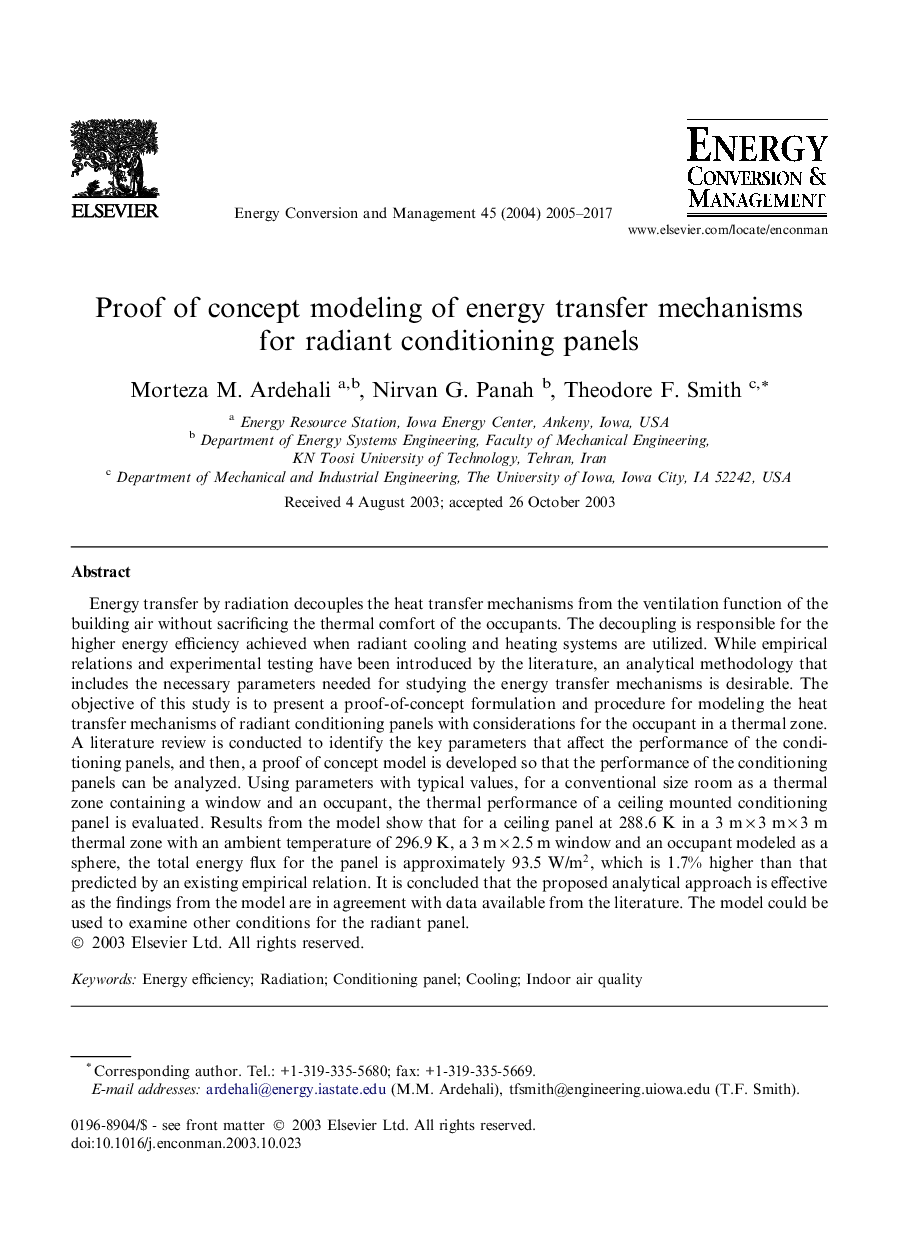| Article ID | Journal | Published Year | Pages | File Type |
|---|---|---|---|---|
| 773231 | Energy Conversion and Management | 2017 | 13 Pages |
Energy transfer by radiation decouples the heat transfer mechanisms from the ventilation function of the building air without sacrificing the thermal comfort of the occupants. The decoupling is responsible for the higher energy efficiency achieved when radiant cooling and heating systems are utilized. While empirical relations and experimental testing have been introduced by the literature, an analytical methodology that includes the necessary parameters needed for studying the energy transfer mechanisms is desirable. The objective of this study is to present a proof-of-concept formulation and procedure for modeling the heat transfer mechanisms of radiant conditioning panels with considerations for the occupant in a thermal zone. A literature review is conducted to identify the key parameters that affect the performance of the conditioning panels, and then, a proof of concept model is developed so that the performance of the conditioning panels can be analyzed. Using parameters with typical values, for a conventional size room as a thermal zone containing a window and an occupant, the thermal performance of a ceiling mounted conditioning panel is evaluated. Results from the model show that for a ceiling panel at 288.6 K in a 3 m × 3 m × 3 m thermal zone with an ambient temperature of 296.9 K, a 3 m × 2.5 m window and an occupant modeled as a sphere, the total energy flux for the panel is approximately 93.5 W/m2, which is 1.7% higher than that predicted by an existing empirical relation. It is concluded that the proposed analytical approach is effective as the findings from the model are in agreement with data available from the literature. The model could be used to examine other conditions for the radiant panel.
